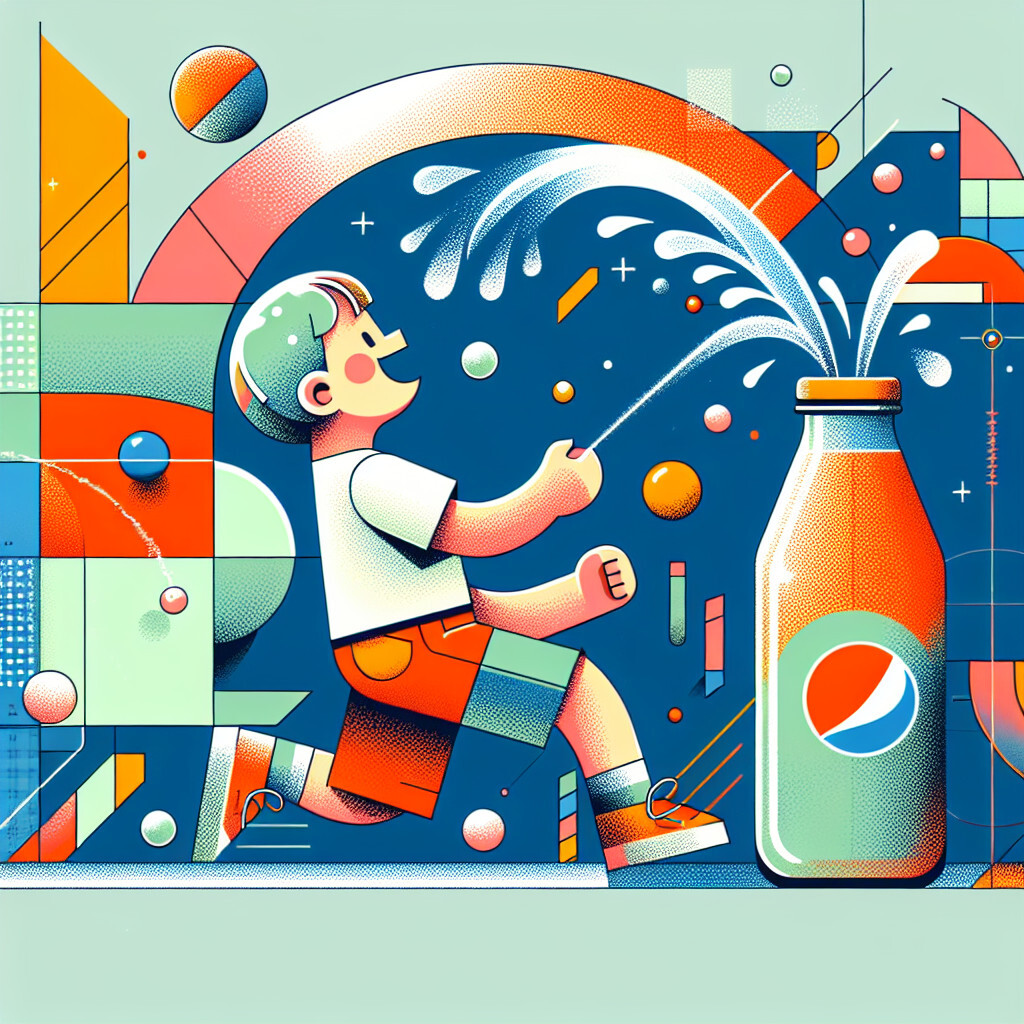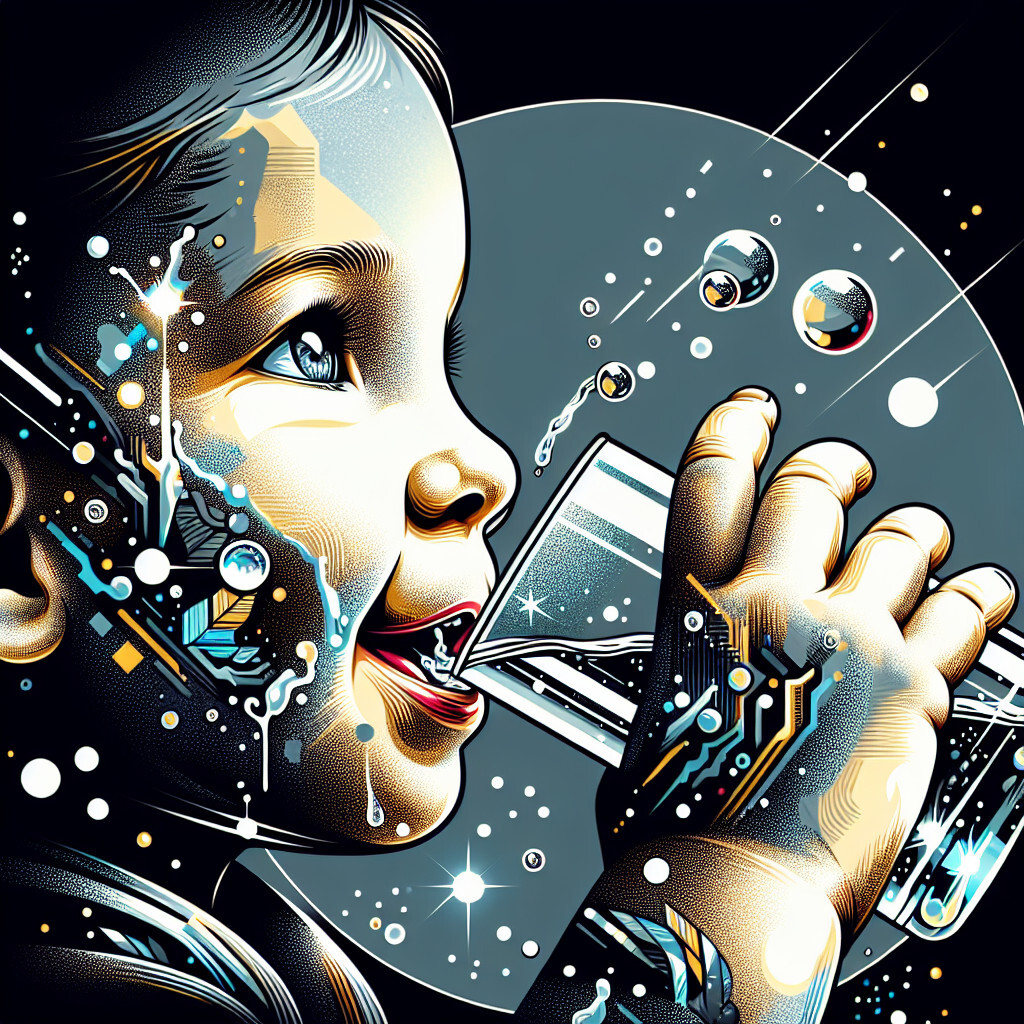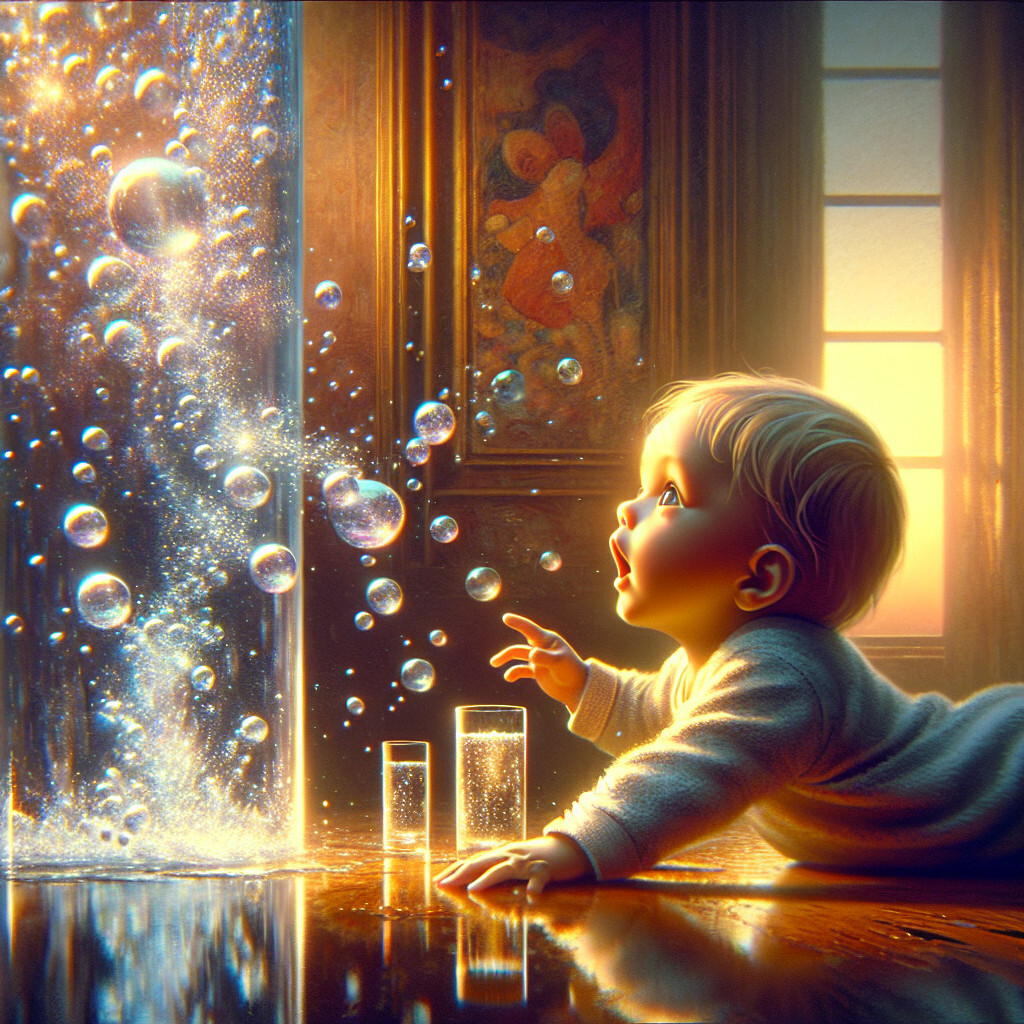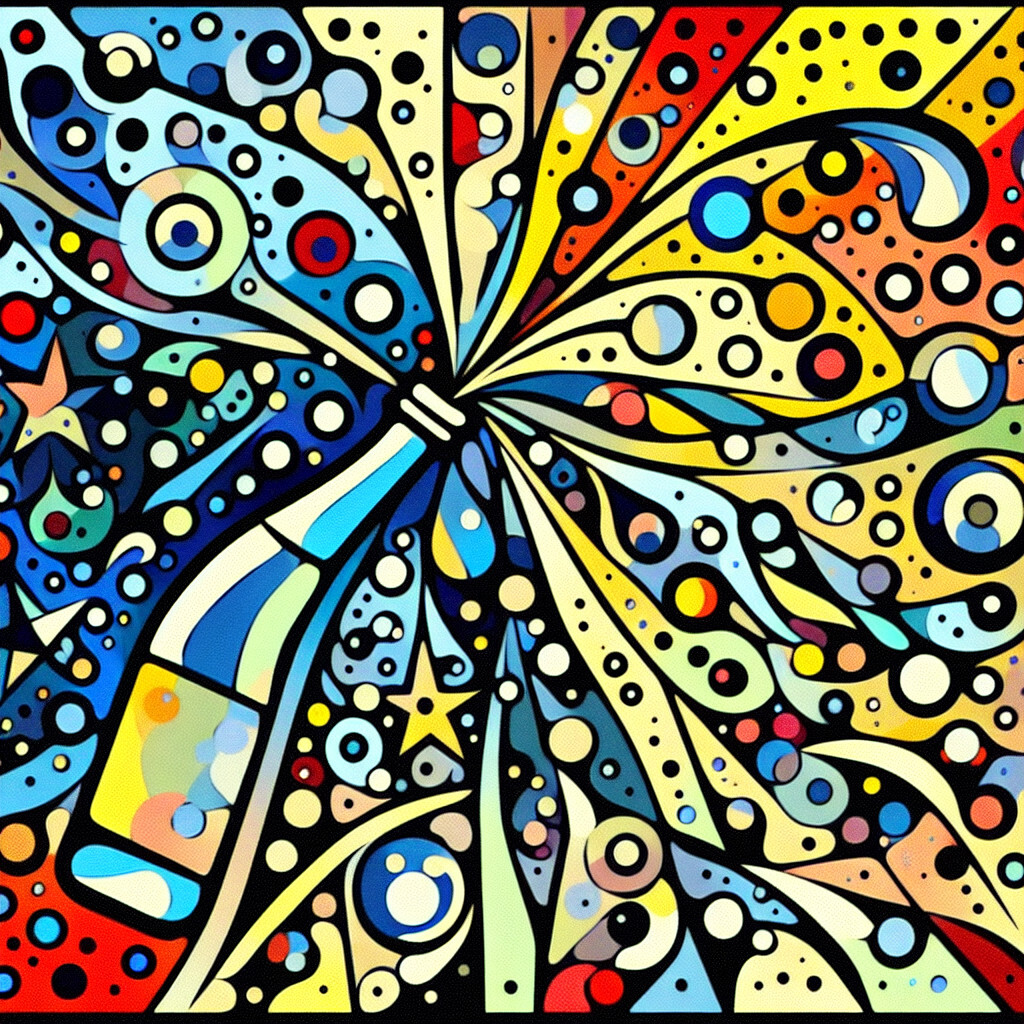-
Table of Contents
“Tiny Bubbles, Big Fun: Sparkling Water for Kids!”
Introduction

Sparkling water is a fun and fizzy drink that is just like regular water but with added bubbles. These bubbles are created by adding carbon dioxide under pressure. It can be a healthier alternative to sugary sodas and can come in different flavors too. It’s like a little party in your mouth!
Understanding the Health Benefits of Sparkling Water for Children
Sparkling water, also known as carbonated water, has gained significant popularity in recent years. It is a refreshing beverage that offers a unique, fizzy sensation, making it a favorite among adults. However, many parents wonder if it’s a suitable drink for their children. This article aims to shed light on the health benefits of sparkling water for children and provide a comprehensive understanding of its potential impacts on their health.
Firstly, it’s essential to understand what sparkling water is. It is simply water into which carbon dioxide gas has been dissolved under pressure. This process, known as carbonation, is what gives the water its characteristic bubbles and fizz. It’s worth noting that sparkling water is different from other carbonated drinks like soda, which often contain high amounts of sugar and artificial flavors. In contrast, sparkling water is typically free of sugars and artificial sweeteners, making it a healthier alternative.
One of the primary health benefits of sparkling water is its ability to keep children hydrated. Hydration is crucial for children’s overall health and well-being. It aids in digestion, helps maintain healthy skin, and is essential for proper brain function. Sparkling water, being essentially water, provides the same hydration benefits as still water. The bubbles can make drinking water more enjoyable for children who might otherwise neglect their hydration needs.
Moreover, sparkling water can be a healthier substitute for sugary drinks. Many children have a preference for sweet, fizzy drinks like soda, which can contribute to obesity and tooth decay. By offering sparkling water as an alternative, parents can help reduce their children’s sugar intake while still providing a fun and fizzy beverage. This can be particularly beneficial in managing the dietary needs of children who are at risk of developing diabetes or other health conditions related to high sugar consumption.
Another potential benefit of sparkling water is its ability to aid digestion. Some studies suggest that the carbonation in sparkling water can help alleviate symptoms of indigestion and constipation. This can be particularly beneficial for children who suffer from these conditions. However, it’s important to note that more research is needed in this area, and parents should consult with a healthcare provider before using sparkling water as a treatment for digestive issues.
Despite its benefits, it’s important to consume sparkling water in moderation. While it’s a healthier alternative to sugary drinks, the carbonation can sometimes lead to bloating or gas, especially in children who are not used to it. Additionally, some brands of sparkling water may contain added sodium, which can contribute to high blood pressure if consumed in excess. Therefore, parents should always check the label before purchasing sparkling water for their children.
In conclusion, sparkling water can be a healthy and enjoyable beverage for children when consumed in moderation. It offers a fun way to stay hydrated, can serve as a healthier alternative to sugary drinks, and may even aid in digestion. However, as with any food or drink, it’s important for parents to monitor their children’s consumption and choose brands that are free of added sugars and sodium. By doing so, they can ensure that their children enjoy the benefits of sparkling water without any potential drawbacks.
How to Make Drinking Sparkling Water Fun for Kids
Sparkling water, also known as carbonated water, is a refreshing beverage that has gained popularity among adults in recent years. However, when it comes to children, this fizzy drink may not be their first choice. The unfamiliar sensation of bubbles and the lack of sweetness compared to traditional children’s drinks can make it a hard sell. Nevertheless, with a little creativity and fun, parents can make drinking sparkling water an enjoyable experience for their kids.
Firstly, it’s important to understand why sparkling water can be a good choice for children. Unlike sugary drinks, sparkling water is free of calories and added sugars, making it a healthier alternative. It also helps in keeping the body hydrated, which is crucial for a child’s overall health and well-being. Moreover, the carbonation in sparkling water can make the drinking experience more interesting and enjoyable, potentially encouraging kids to drink more water overall.
To make sparkling water more appealing to children, consider adding a splash of natural fruit juice. This not only imparts a hint of sweetness but also adds a vibrant color that can attract kids. Opt for fresh, organic fruit juices without added sugars to maintain the health benefits. You can experiment with a variety of flavors like orange, apple, or even exotic ones like pomegranate and passion fruit. This way, children can enjoy a different flavor each time, keeping the experience exciting and new.
Another fun way to encourage children to drink sparkling water is by using fancy straws or cups. Kids are often attracted to colorful and unique items. Using straws with fun shapes or cups with their favorite cartoon characters can make drinking sparkling water seem like a fun activity rather than a chore. This can also give them a sense of ownership and independence, which can further motivate them to drink more water.
In addition to this, you can also involve your children in the process of making sparkling water at home. There are various home carbonation machines available in the market that are safe and easy to use. Kids can enjoy the process of turning plain water into a fizzy drink, and this hands-on experience can make them more interested in drinking it. Plus, it’s a great way to teach them about science and how carbonation works.
Lastly, it’s important to lead by example. If children see their parents enjoying sparkling water, they are more likely to try it themselves. Make it a family habit to drink sparkling water during meals or as a refreshing drink on hot days. This can help normalize the drink in your child’s diet and make it a regular part of their hydration routine.
In conclusion, while sparkling water might not be an instant hit with children, with a little creativity and fun, it can become an enjoyable and healthy part of their diet. By adding natural flavors, using fun drinking accessories, involving them in the making process, and leading by example, parents can make drinking sparkling water a fun experience for their kids. Remember, the goal is not just to get them to drink sparkling water, but to help them develop healthy hydration habits that will benefit them in the long run.
Sparkling Water vs. Sugary Drinks: Which is Better for Your Child?
As parents, we are constantly faced with the challenge of making the best choices for our children, especially when it comes to their nutrition. One such decision is choosing between sparkling water and sugary drinks for our children. While the latter may be more appealing to their taste buds, the former is undeniably a healthier option.
Sparkling water, also known as carbonated water, is a refreshing beverage that is gaining popularity among health-conscious individuals. It is simply water into which carbon dioxide gas has been dissolved under pressure. This process, known as carbonation, creates small bubbles and gives the water a fizzy sensation that many find enjoyable.
On the other hand, sugary drinks, such as sodas and fruit juices, are loaded with added sugars. These drinks are not only high in calories but also lack essential nutrients. Consuming them regularly can lead to a host of health problems, including obesity, tooth decay, and type 2 diabetes.
The American Heart Association recommends that children aged 2 to 18 should have less than 25 grams of added sugars per day. However, a single 12-ounce can of soda can contain up to 40 grams of added sugars, far exceeding the daily limit. In contrast, sparkling water contains no added sugars or calories, making it a much healthier choice.
Moreover, the high sugar content in sugary drinks can lead to a cycle of sugar addiction in children. The sweet taste triggers the release of dopamine, a neurotransmitter that controls the brain’s reward and pleasure centers. This can lead to a craving for more sugary foods and drinks, creating a vicious cycle that is hard to break.
In contrast, while sparkling water may not trigger the same dopamine release, it can provide a satisfying alternative to still water. The bubbles can create a sense of fullness, which can help curb overeating. Additionally, the fizziness can provide a similar sensory experience to that of sugary drinks, making it a viable substitute for children who are used to consuming carbonated beverages.
However, it’s important to note that not all sparkling waters are created equal. Some brands may add sugars, artificial sweeteners, or other additives to enhance the flavor. Therefore, when choosing sparkling water for your child, it’s crucial to read the label carefully and opt for brands that contain only carbonated water and natural flavors.
In conclusion, when it comes to choosing between sparkling water and sugary drinks for your child, the former is a clear winner. Not only does it provide a fun and refreshing alternative to still water, but it also helps to reduce the intake of added sugars, which can lead to various health problems. By making this simple switch, you can help set your child on a path towards healthier eating habits, without sacrificing taste or enjoyment.
Incorporating Sparkling Water into Your Child’s Diet: A Guide for Parents
As parents, we are constantly seeking ways to ensure our children maintain a healthy lifestyle. One area that often poses a challenge is hydration. While water is the best source of hydration, many children find it bland and unappealing. This is where sparkling water comes into play. Incorporating sparkling water into your child’s diet can be a beneficial and enjoyable way to keep them hydrated.
Sparkling water, also known as carbonated water, is simply water into which carbon dioxide gas has been dissolved under pressure. This process gives the water its characteristic bubbles and fizz. It’s a refreshing alternative to still water and can be a fun way for children to stay hydrated. However, it’s important to note that not all sparkling waters are created equal. Some contain added sugars, artificial flavors, or other additives that can be harmful to your child’s health. Therefore, when choosing a sparkling water for your child, it’s crucial to read the labels carefully and opt for brands that contain no added sugars or artificial ingredients.
One of the main benefits of sparkling water is its potential to encourage better hydration. Many children struggle to drink the recommended amount of water each day, but the unique texture and taste of sparkling water can make hydration more appealing. Furthermore, sparkling water can be a healthier alternative to sugary drinks like soda. While it has the same satisfying fizz, it doesn’t come with the high sugar content and potential health risks associated with these beverages.
In addition to hydration, sparkling water can also play a role in digestion. The carbonation in sparkling water can help to stimulate the body’s natural digestive processes. This can be particularly beneficial for children who suffer from constipation, as staying well-hydrated is a key factor in maintaining regular bowel movements.
However, while sparkling water has its benefits, it’s important to introduce it into your child’s diet in a balanced and responsible way. Sparkling water should not replace regular water entirely. Instead, it should be used as a tool to supplement hydration and make drinking water more enjoyable for your child. It’s also worth noting that the carbonation in sparkling water can cause bloating and gas in some individuals, so it’s best to monitor your child’s reaction when they first start drinking it.
Incorporating sparkling water into your child’s diet can be as simple as offering it as an alternative to still water at meal times, or using it as a base for homemade fruit spritzers. You can also encourage your child to experiment with adding fresh fruit or herbs to their sparkling water, which can make it even more appealing and add a nutritional boost.
In conclusion, sparkling water can be a beneficial addition to your child’s diet. It offers a fun and refreshing way to stay hydrated, can aid in digestion, and serves as a healthier alternative to sugary drinks. However, it’s important to choose sparkling water without added sugars or artificial ingredients, and to introduce it into your child’s diet in a balanced way. With careful consideration and moderation, sparkling water can be a valuable tool in promoting your child’s overall health and wellbeing.
Q&A
1. Question: What is sparkling water?
Answer: Sparkling water is water that has been infused with carbon dioxide gas under pressure, which makes it fizzy or bubbly.
2. Question: Is sparkling water good for you?
Answer: Yes, sparkling water is a good alternative to sugary drinks and can help keep you hydrated. However, it’s important to choose sparkling water without added sugars or artificial flavors.
3. Question: Why does sparkling water taste different from regular water?
Answer: The carbon dioxide that is added to make sparkling water fizzy also creates carbonic acid, which gives sparkling water a slightly tart taste.
4. Question: Can I drink sparkling water instead of regular water?
Answer: Yes, you can drink sparkling water instead of regular water. It can help keep you hydrated just like regular water. But remember, it’s always good to also drink regular water.
Conclusion
Sparkling water can be a fun and healthy alternative to sugary drinks for children. It’s important to choose varieties without added sugars or artificial flavors. However, it should not replace regular water in a child’s diet.





